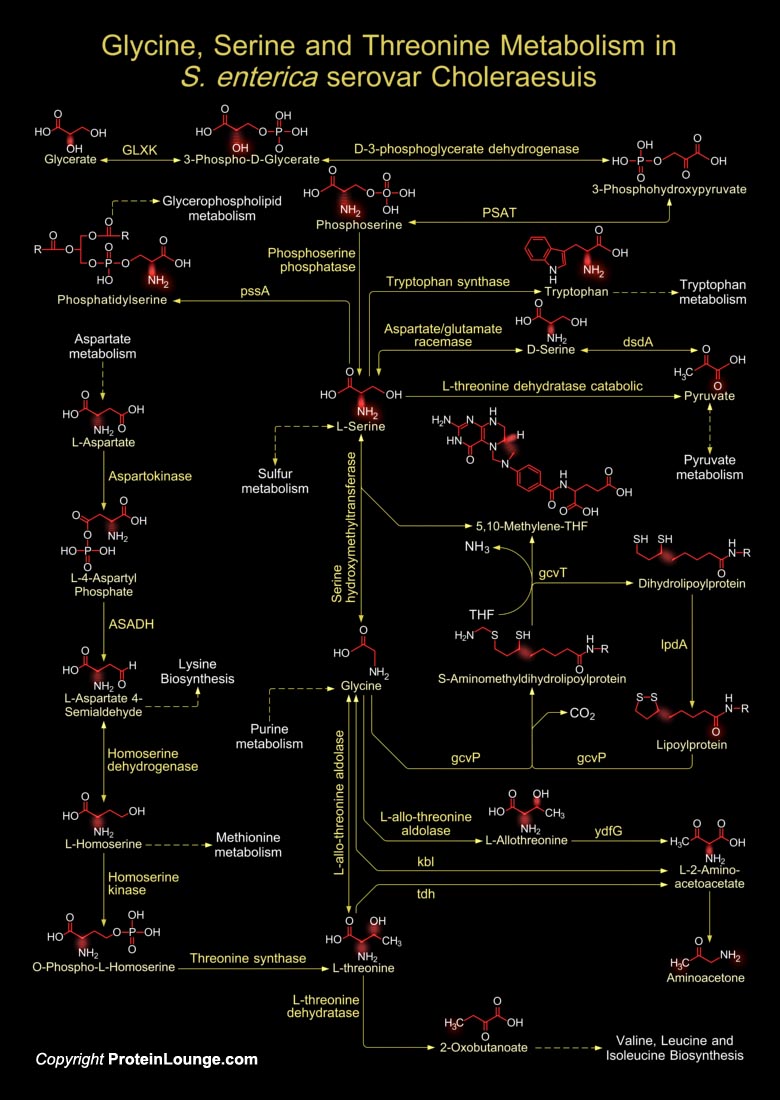
Salmonella are important pathogens in humans and animals. S. choleraesuis (Salmonella enterica serovar Choleraesuis) is a highly invasive serovar among non-typhoidal Salmonella and usually cause systemic human Salmonellosis without Diarrhea and septicemic Salmonellosis and Enterocolitis in pigs (Ref.1). S. choleraesuis infections are difficult to treat because of the multidrug-resistant genes. S. choleraesuis has 151 pseudogenes, which, among the three Salmonella genomes, include the highest percentage of pseudogenes arising from the genes involved in bacterial Chemotaxis and signal-transduction pathways. These flagellated, Gram-negative bacilli utilize small peptides as nutrients, Chemoattractants, and Quorum Sensing signals, and their metabolism is a target for[..]
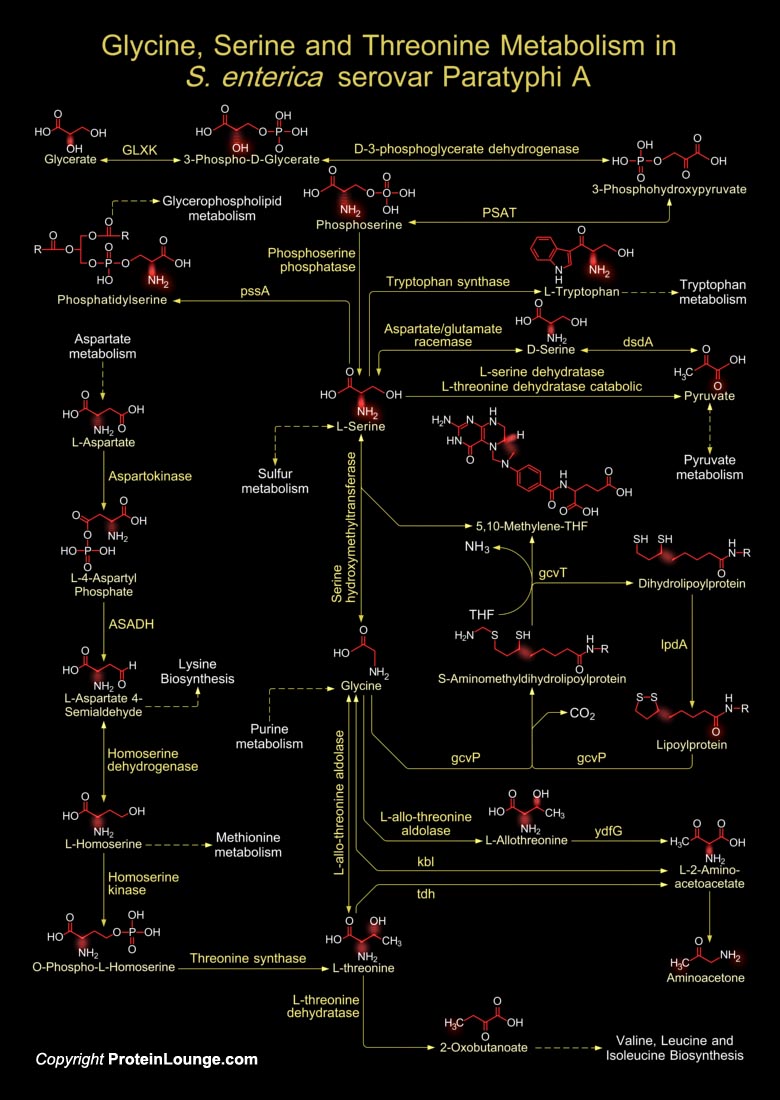
S. enterica (Salmonella enterica) serovars often have a broad host range and some cause both gastrointestinal and systemic disease. S. paratyphi (Salmonella paratyphi) is part of the Enterobacteriaceae family; it is a Gram-negative motile, aerobic rod which is facultatively anaerobic. The serovar Paratyphi A or S. enterica serovar Paratyphi A is restricted to humans and causes only systemic disease (Ref.1). After entering the small intestine wall, the Salmonella invades through the lymphatic system to the lymph nodes and after a period of multiplication invades the blood stream. From there the bacteria invade the liver, gall bladder, spleen, kidney and bone marrow where it multiplies and causes infection of these organs. From here they again invade the blood stream[..]
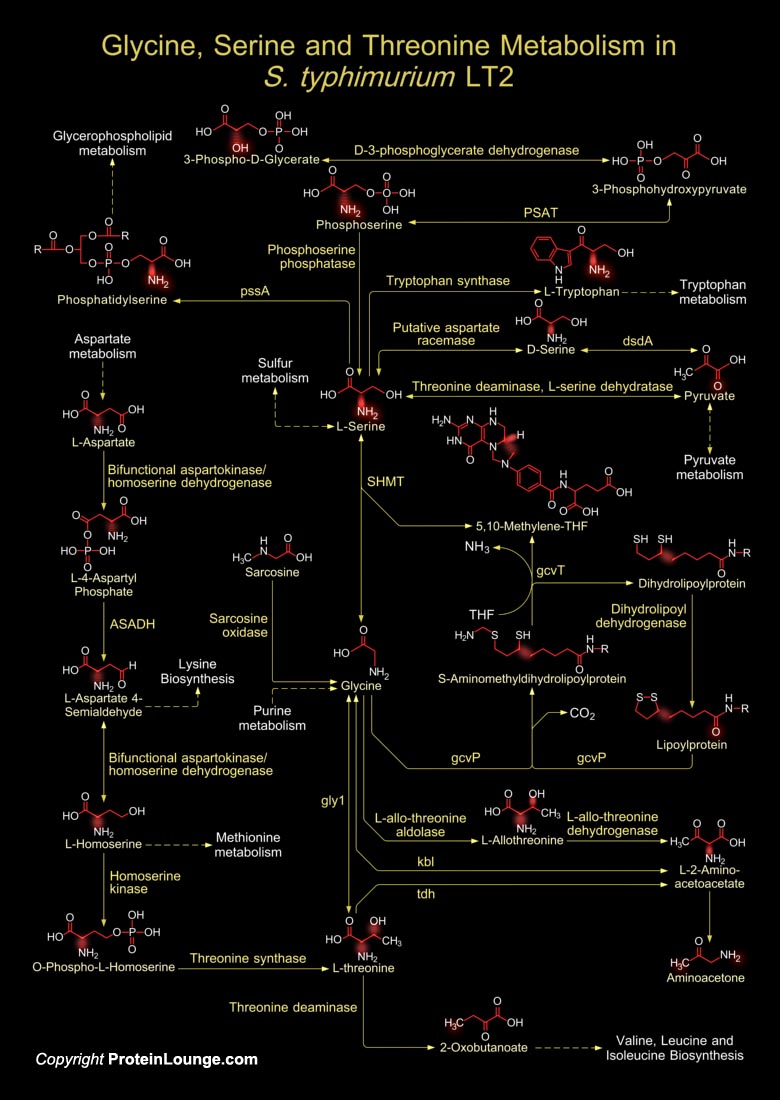
S. typhimurium (Salmonella enterica subspecies I, serovar Typhimurium), is a leading cause of human Gastroenteritis, and is used in mouse models of human Typhoid fever. The genus Salmonella comprises two species: S. enterica, which is subdivided into over 2,000 serovars, and S. bongori (Salmonella bongori). Some serovars of S. enterica, such as S. typhi, cause systemic infections and Typhoid fever, whereas others, such as S. typhimurium, cause Gastroenteritis. Some serovars, such as S. typhi, are host specialists that infect only humans, whereas others such as S. typhimurium are host generalists that occur in humans and many other mammalian species. Domestic animals act as a reservoir for the food-borne spread of host-generalist serovars, which accounts for the high[..]
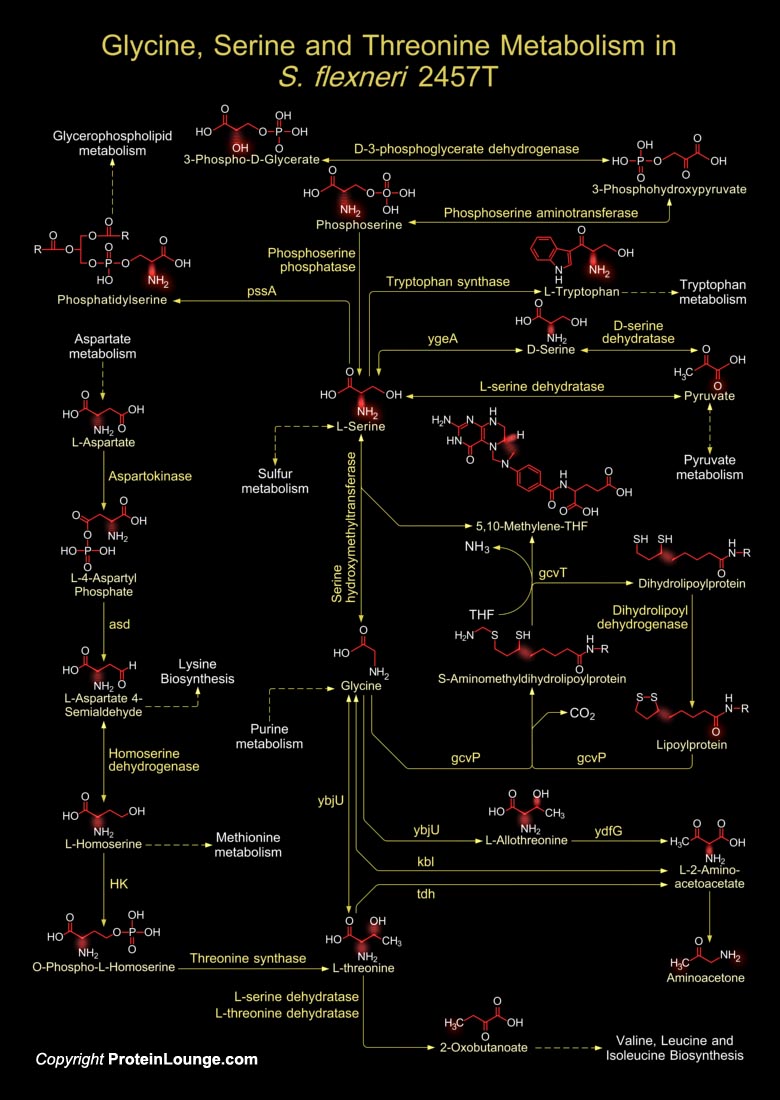
Shigella is pathogenic only for humans and the strains are unusual among enteric bacteria in their ability to gain access to the epithelial cell cytosol, where they replicate and spread directly into adjacent cells. It causes disease by invading the epithelium of the colon, resulting in an intense acute inflammatory response. Shigella species are Gram-negative, non-sporulating and facultative anaerobes. S. flexneri (Shigella flexneri) lacks surface structures such as flagella, fimbriae, and curli. Entry into epithelial cells occurs by an engulfment of the host cell membrane at the interaction points with bacteria. Shigella strains contain a large virulence plasmid that is known to encode genes required and sufficient for invasion of epithelial cells. Genes on a[..]
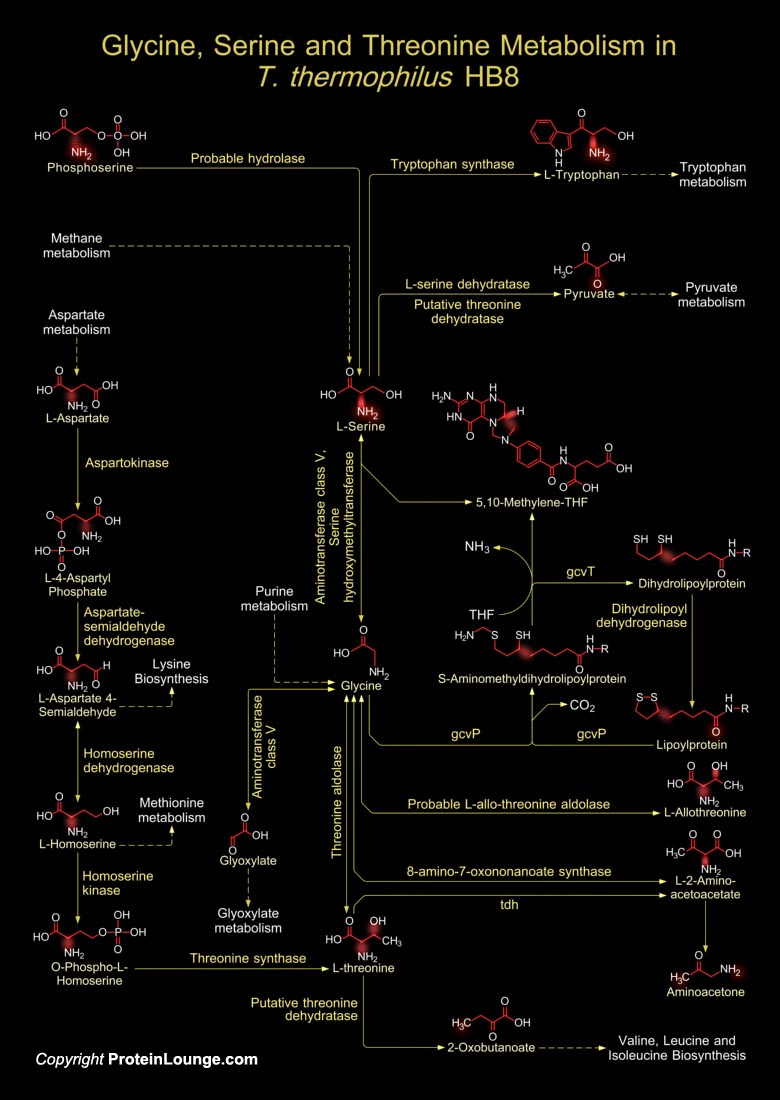
The organism T. thermophilus HB8 (Thermus thermophilus HB8) is a Gram-negative eubacterium that grows in a natural thermal environment with temperatures ranging from 50 to 82 degrees Centigrade. Unlike other extreme anaerobic thermophiles, the Thermus species are an exception, as they are strict aerobic chemorganotrophs. Although aerobic, T. thermophilus HB8 can also grow under anaerobic conditions in the presence of nitrate due to synthesis of the nitrate reductase complex encoded by the nar operon. Expression from this operon is induced under low oxygen concentrations only when nitrate is present. Thermophilic organisms, like the vast majority of other microorganisms, accumulate compatible solutes in response to water stress imposed by salt (Ref.1 & 2). These[..]
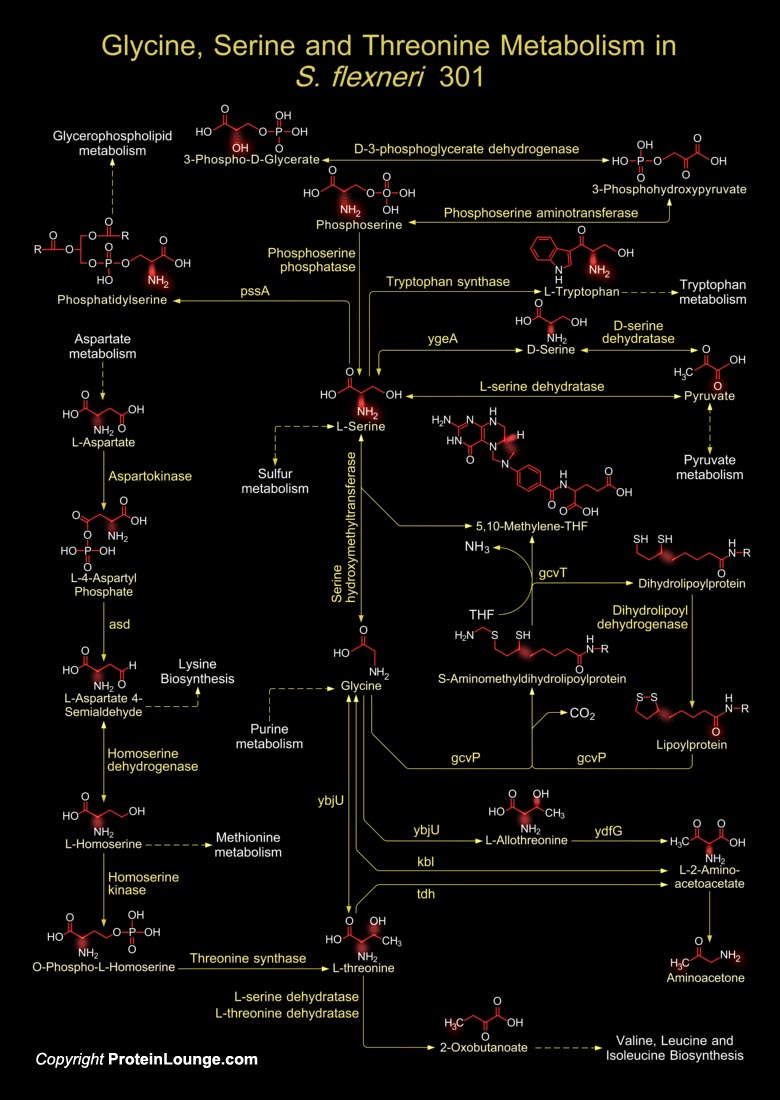
Shigella strains are unusual among enteric bacteria in their ability to gain access to the epithelial cell cytosol, where they replicate and spread directly into adjacent cells. These strains are pathogenic only for human. It invades the epithelium of the colon, resulting in an intense acute inflammatory response. The S. flexneri (Shigella flexneri) serotype 2a is the most prevalent species and serotype that cause Bacillary Dysentery or Shigellosis in man. S. flexneri is commonly found in water polluted with human faeces. It is transmitted in contaminated food or water and through contact between people. Upon infection, humans develop severe abdominal cramps, fever, and frequent passage of bloody stools. Shigellosis is not only a significant cause of infant mortality[..]
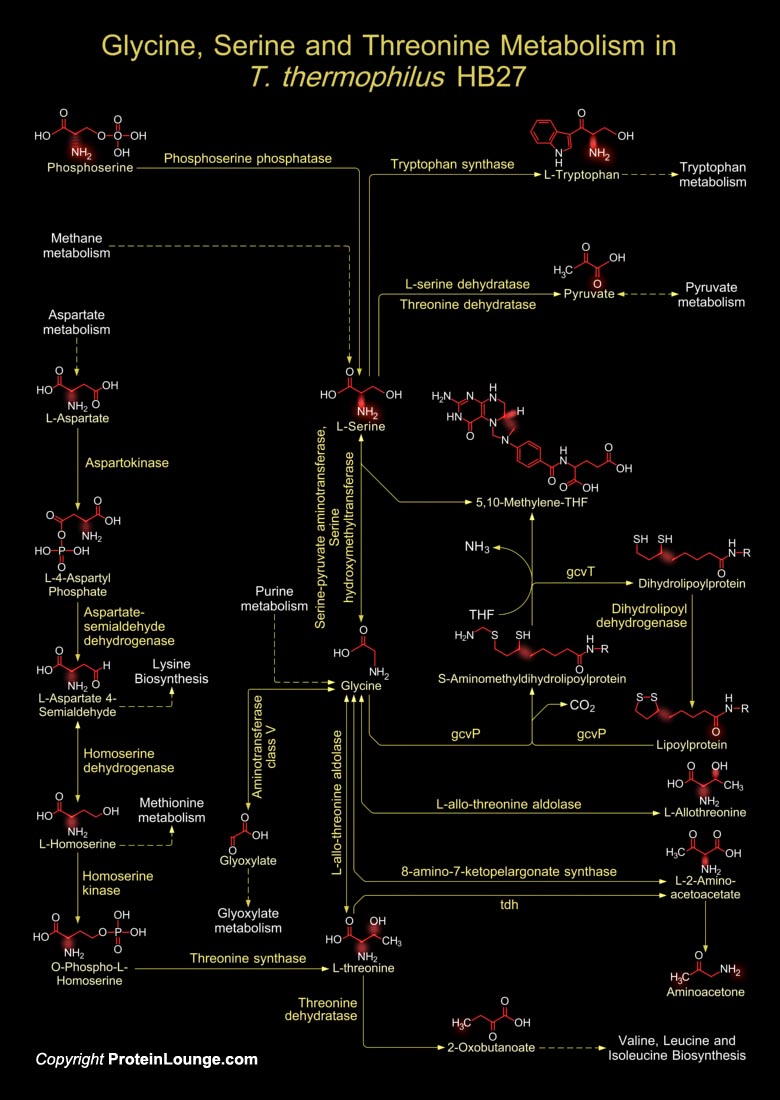
T. thermophilus (Thermus thermophilus) is a Gram-negative, aerobic eubacterium which grows at temperatures ranging from 50 to 82 degrees Centigrade. The organism, T. thermophilus strain HB27 grows in a natural thermal environment with an optimal growth at 68 degrees Centigrade and pH 7.0. Most extreme thermophiles that live in geothermal environments are strict anaerobes as a consequence of the adaptation to the low solubility of oxygen at these temperatures. However, Thermus species are an exception because they are strictly aerobic chemorganotrophs. T. thermophilus HB27 is unable to grow under anaerobic conditions but the ability to grow anaerobically by nitrate reduction can be transferred to the aerobic strain HB27 by conjugation. Thermophilic organisms, like the[..]
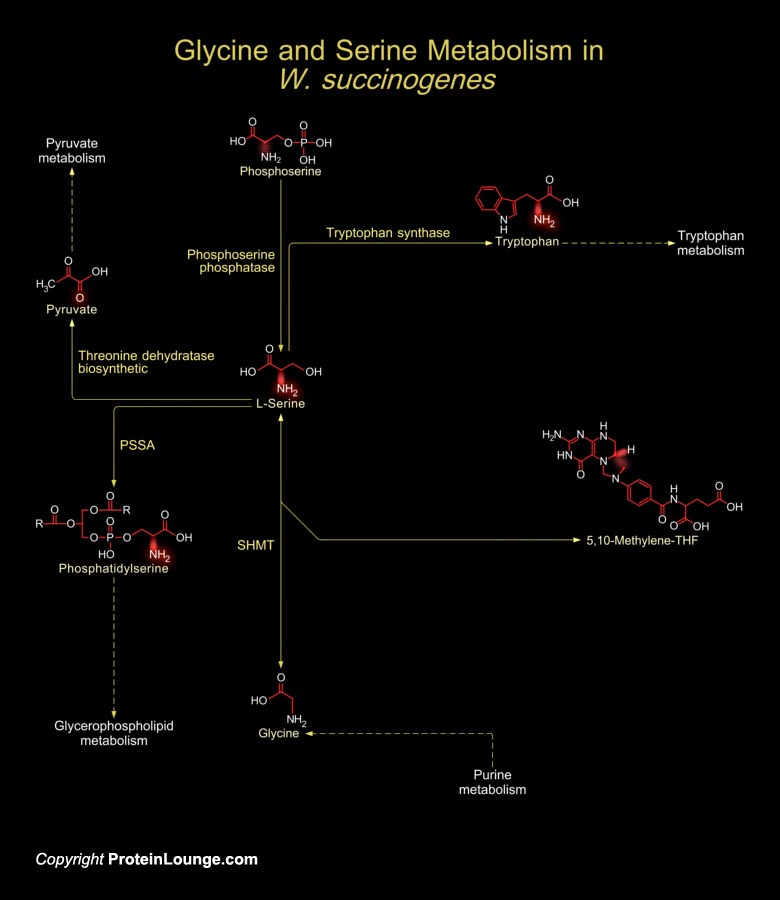
W. succinogenes (Wolinella succinogenes) is a non-fermenting bacterium that grows anaerobically. It is rod-shaped bacteria with monotrichous flagellation and the insertion of the flagellar motor is into the pole of the cell. W. succinogenes resides in the bovine rumen, the human gingival sulcus, and dental root canal infections. W. succinogenes, is closely related to the pathogenic bacteria H. pylori (Helicobacter pylori) and C. jejuni (Campylobacter jejuni) (Ref.1). Despite being considered non-pathogenic to its bovine host, W. succinogenes holds an extensive repertoire of genes homologous to known bacterial virulence factors. Many of these genes have been acquired by lateral gene transfer. W. succinogenes genome also reveals genes related to soil and plant associated[..]
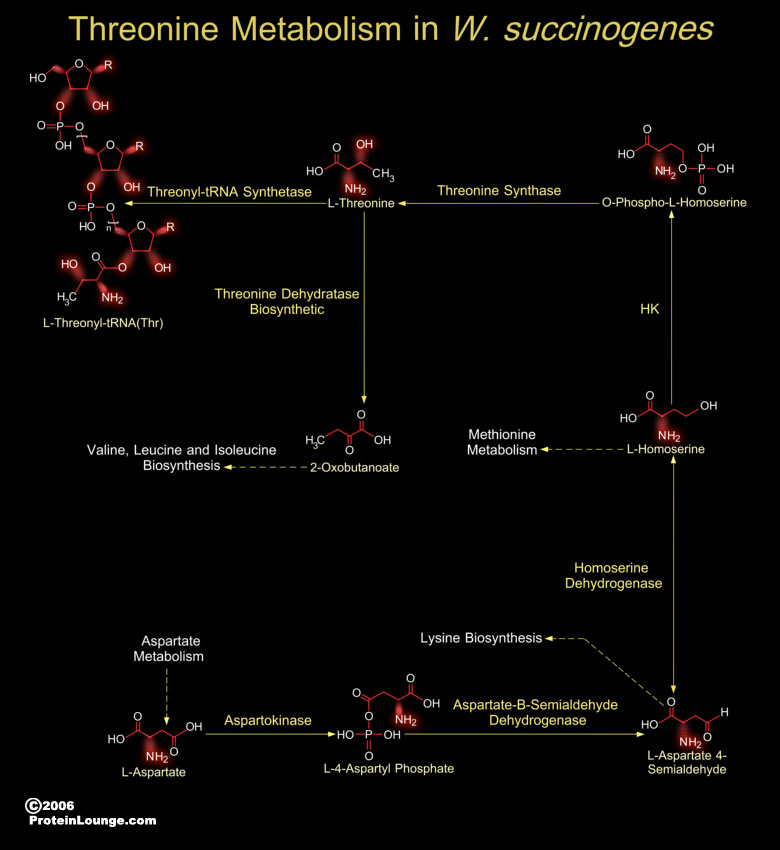
W. succinogenes (Wolinella succinogenes) is a non-fermenting bacterium that grows anaerobically. It is rod-shaped bacteria with monotrichous flagellation and the insertion of the flagellar motor is into the pole of the cell. W. succinogenes resides in the bovine rumen, the human gingival sulcus, and dental root canal infections. W. succinogenes, is closely related to the pathogenic bacteria H. pylori (Helicobacter pylori) and C. jejuni (Campylobacter jejuni) (Ref.1). Despite being considered non-pathogenic to its bovine host, W. succinogenes holds an extensive repertoire of genes homologous to known bacterial virulence factors. Many of these genes have been acquired by lateral gene transfer. W. succinogenes genome also reveals genes related to soil and plant associated[..]
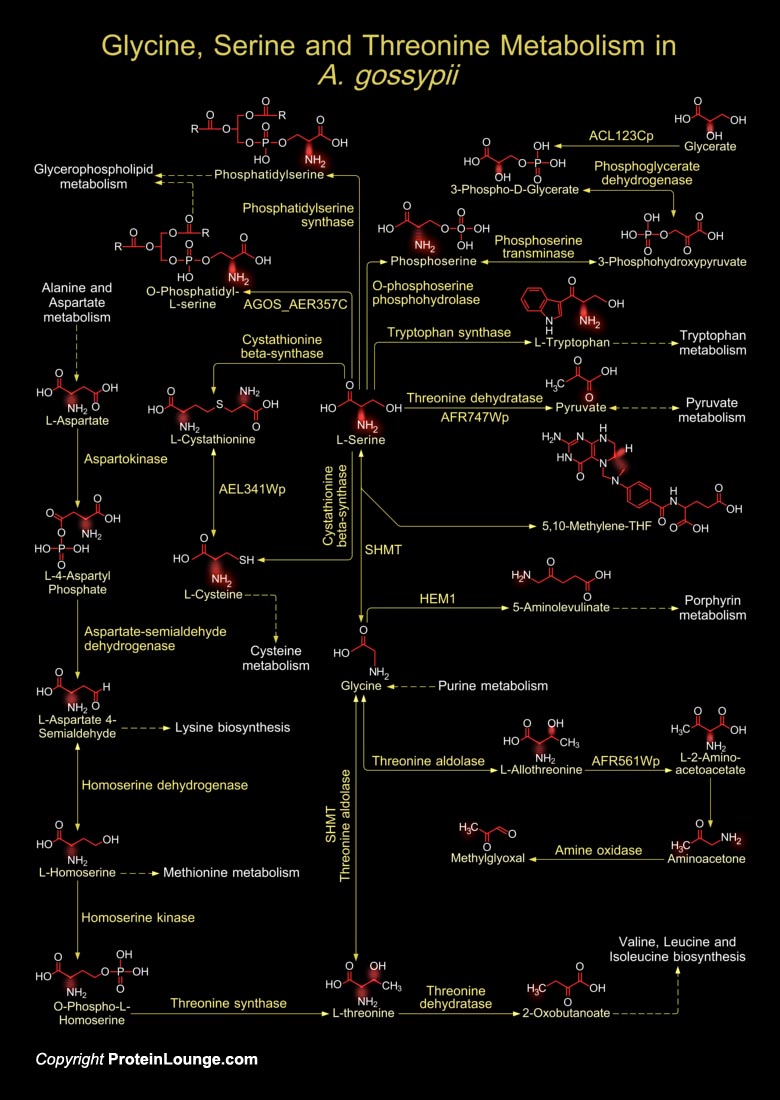
The yeast A. gossypii (Ashbya gossypii), also known as E. gossypii (Eremothecium gossypii), is a free-living hemiascomycete that utililizes amino acid metabolisms to obtain its nitrogen source. For such reason the metabolism of Glycine, Serine and Threonine is essential for the survival of A. gossypii. Yeast physiology can be either obligately aerobic or facultatively fermentative. There is no known obligately anaerobic yeast. Yeasts generally use L-Serine or L-Threonine as sole nitrogen source. (Ref.1 & 2). L-Threonine is generally synthesized from Pyruvate and L-Aspartate. The enzyme Threonine Dehydratase converts Pyruvate (from Pyruvate metabolism) to amino acids like L-Serine. SHMT (Serine Hydroxymethyltransferase) then catalyzes the cleavage of L-Serine to[..]
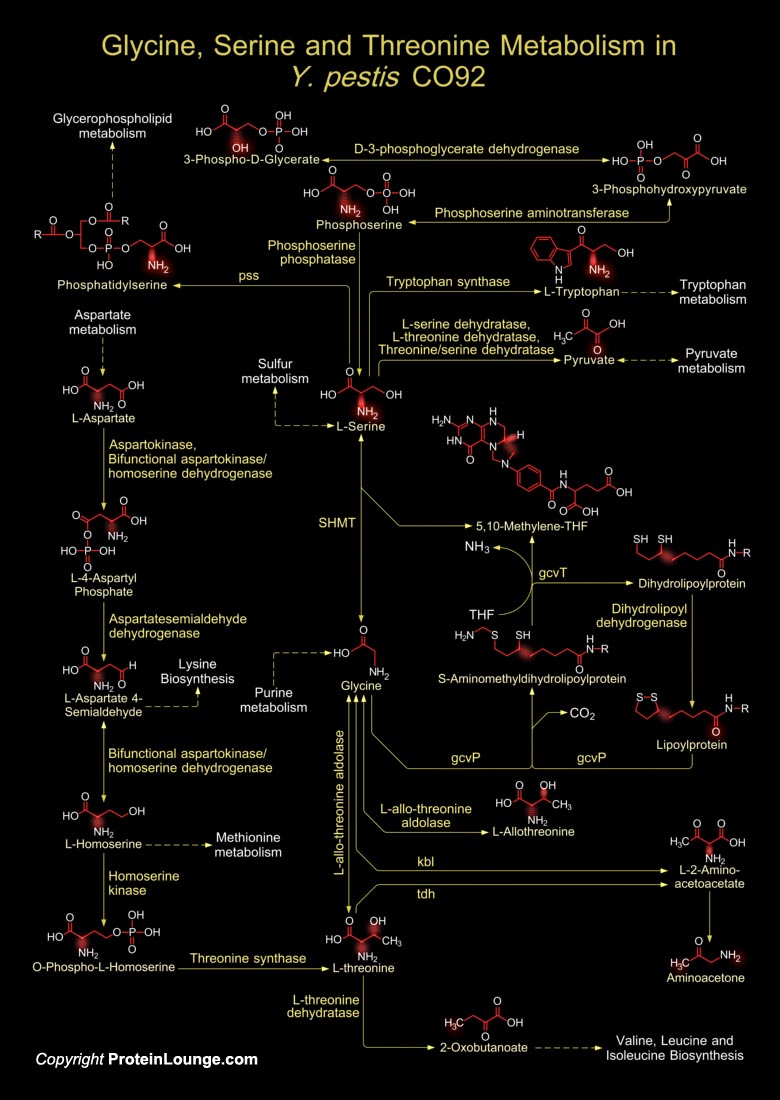
Y. pestis (Yersinia pestis), the Gram-negative Coccobacillus belonging to the Enterobacteriaceae is the causative agent of Plague and is arguably the deadliest pathogen in history. It is one of several agents likely to be used as a biological weapon in a bioterrorism event. Yersinia sp. is responsible for disease syndromes ranging from Gastroenteritis to Plague. Y. pestis is actually categorized into three subtypes or biovars; Antiqua, Medievalis, and Orientalis, each associated with a major pandemic. Y. pestis strand CO92 is in the biovar Orientalis. The biovar Orientalis bacteria are responsible for the modern Plague. Y. pestis CO92 has a circular chromosome that is 4.65Mb in size. Strain CO92 has one less rRNA operon than strain KIM (Ref.1). Y. pestis is rod shaped[..]
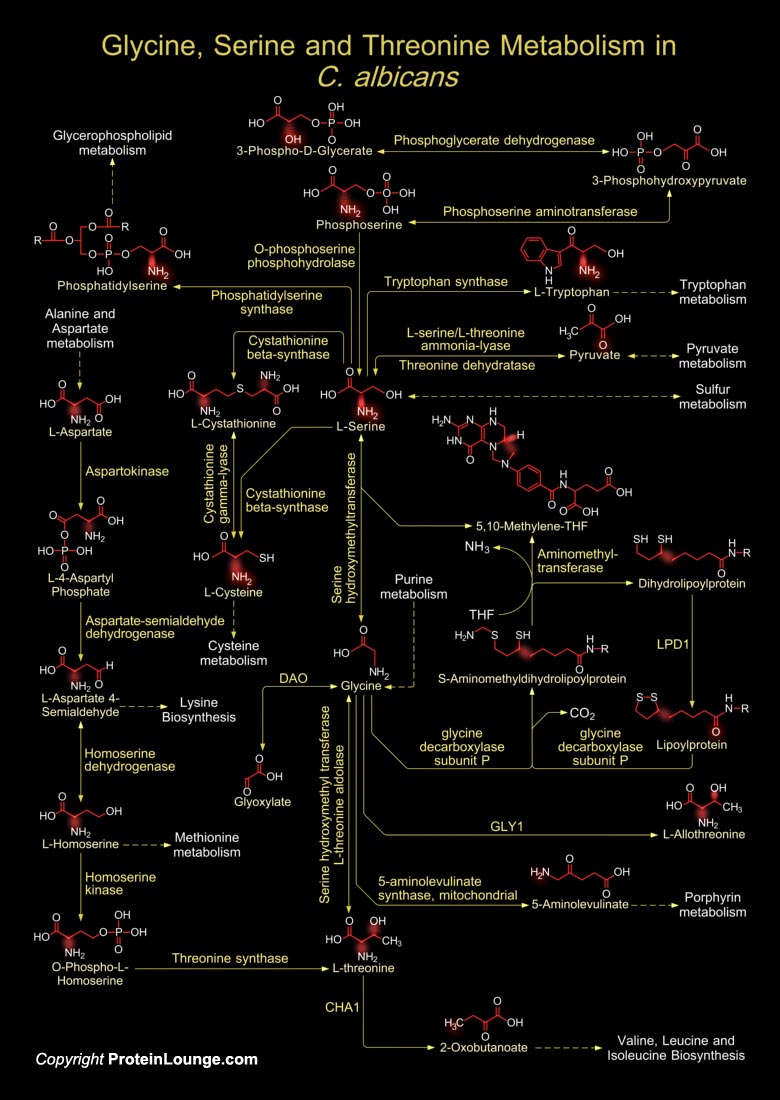
Like many bacteria, yeast species can form biofilms on several surfaces. C. albicans (Candida albicans) colonizes in the surfaces of catheters, prostheses, and epithelia, forming biofilms that are extremely resistant to anti-fungal drugs. The protein Gcn4 (Transcriptional Activator Gcn4), a regulator of amino acid metabolism, is required for normal biofilm growth. The biochemical mechanisms including activation of the sulfur-amino acid biosynthesis pathway is a feature of C. albicans biofilms. For such reasons the metabolism of Glycine, Serine and Threonine is of vital importance as it regulates morphogenesis and virulence in C. albicans. Yeasts also use L-Serine or L-Threonine as sole nitrogen source for their survival. L-Threonine is generally synthesized from[..]

